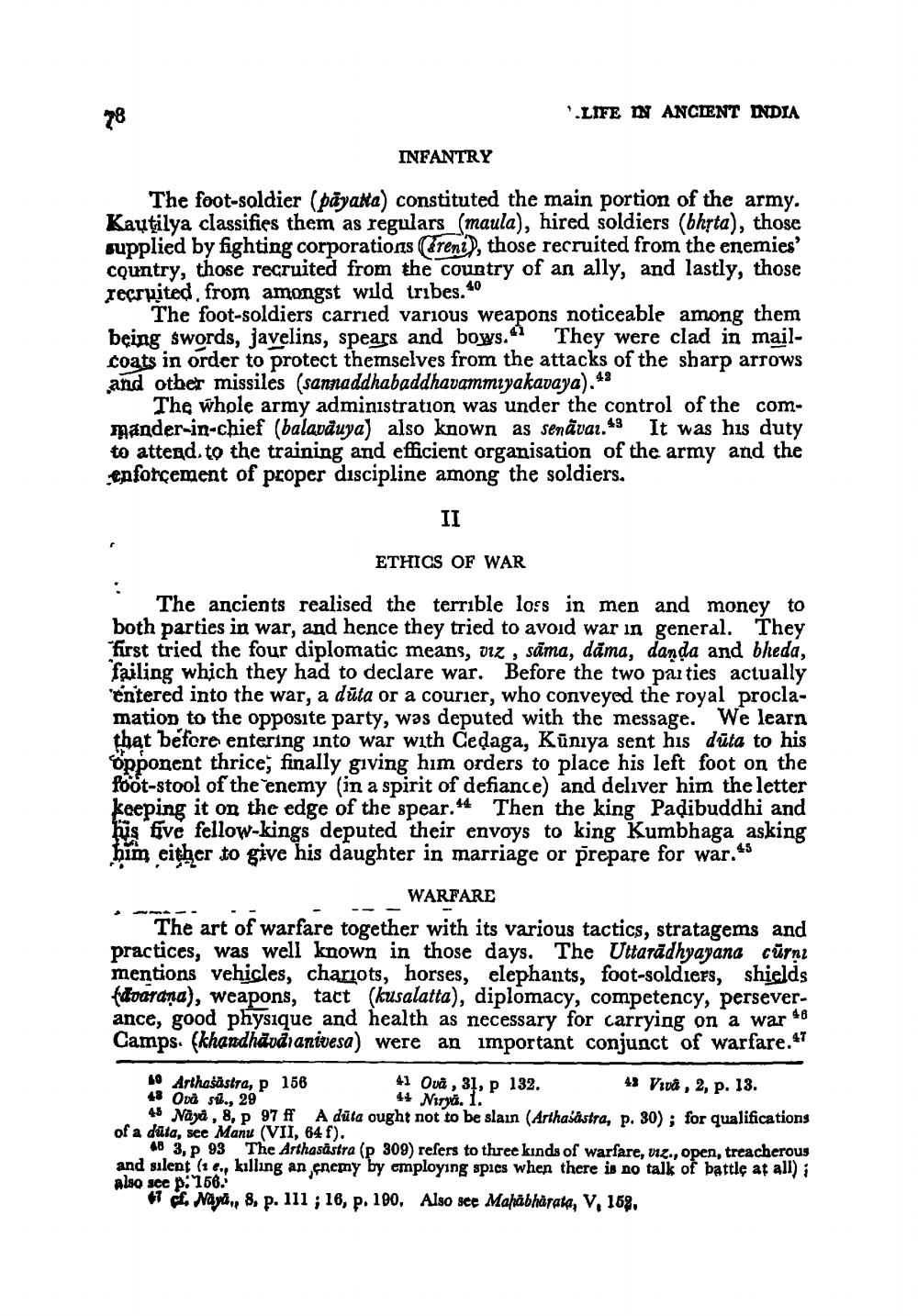________________
LIFE IN ANCIENT INDIA
INFANTRY
The foot-soldier (pāyana) constituted the main portion of the army. Kautilya classifies them as regulars_(maula), hired soldiers (bhṛta), those supplied by fighting corporations (treni), those recruited from the enemies' country, those recruited from the country of an ally, and lastly, those recruited from amongst wild tribes."0"
The foot-soldiers carried various weapons noticeable among them being swords, javelins, spears and boys. They were clad in mailcoats in order to protect themselves from the attacks of the sharp arrows and other missiles (sannaddhabaddhavammiyakavaya). 43
The whole army administration was under the control of the commander-in-chief (balavāuya) also known as senāvar. It was his duty to attend to the training and efficient organisation of the army and the enforcement of proper discipline among the soldiers.
II
ETHICS OF WAR
The ancients realised the terrible loss in men and money to both parties in war, and hence they tried to avoid war in general. They first tried the four diplomatic means, viz , sāma, dama, danda and bheda, failing which they had to declare war. Before the two parties actually entered into the war, a dūta or a courier, who conveyed the royal proclamation to the opposite party, was deputed with the message. We learn that before entering into war with Cedaga, Kūniya sent his data to his opponent thrice, finally giving him orders to place his left foot on the foot-stool of the enemy in a spirit of defiance) and deliver him the letter keeping it on the edge of the spear. 44 Then the king Padibuddhi and huis five fellow-kings deputed their envoys to king Kumbhaga asking him either to give his daughter in marriage or prepare for war. 45
WARFARE The art of warfare together with its various tactics, stratagems and practices, was well known in those days. The Uttarādhyayana cūrni mentions vehicles, chariots, horses, elephants, foot-soldiers, shields
doarana), weapons, tact (kusalatta), diplomacy, competency, perseverance, good physique and health as necessary for carrying on a war 46 Camps. (khandhavaianivesa) were an important conjunct of warfare."
Camps. on physique and healthatta), diplomacy, com
19 Arthasästra, p 156
41 Ovå, 31, p 132. 43 Vivå , 2, p. 13. 48 Ovi sl., 29
44 Nirya. 1. 45 Naya , 8, p 97 ff A dūla ought not to be slain (Arthasastra, p. 30); for qualifications of a dūta, see Manu (VII, 64 f).
48 3, p 93 The Arthasāstra (p 309) refers to three kinds of warfare, viz., open, treacherous and silent (1¢., killing an enemy by employing spies when there is no talk of battle at all) i also see p. 156.
67 cf. Näyd., 8, p. 111 ; 16, p. 190. Also see Mahabharata, V, 16%.




